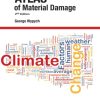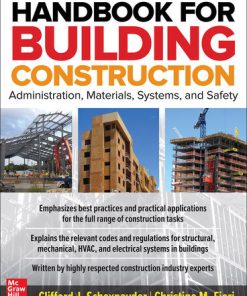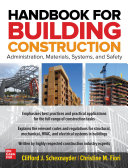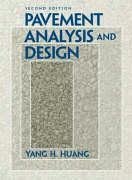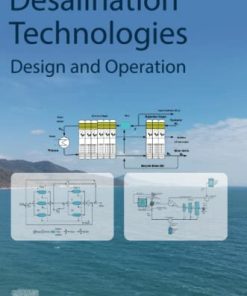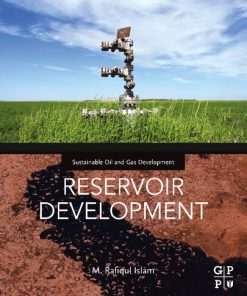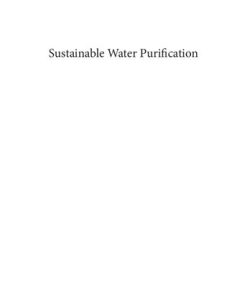(EBOOK PDF)Pavement Design Materials Analysis and Highways 1st Edition by Rashad Islam, Rafiqul Tarefder 9781260458923 126045892X full chapters
$50.00 Original price was: $50.00.$25.00Current price is: $25.00.
Pavement Design Materials Analysis and Highways 1st Edition by Rashad Islam, Rafiqul Tarefder – Ebook PDF Instant Download/Delivery: 9781260458923, 126045892X
Full download Pavement Design Materials Analysis and Highways 1st Edition after payment
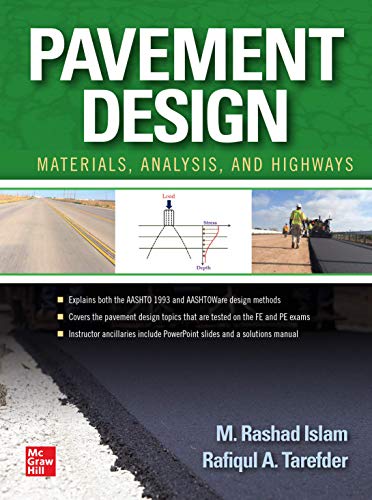
Product details:
• ISBN 10:126045892X
• ISBN 13:9781260458923
• Author:Rashad Islam, Rafiqul Tarefder
Pavement Design: Materials, Analysis, and Highways
Master the principles, analysis, and design in pavement engineering This student-friendly textbook offers comprehensive coverage of pavement design and highways. Written by two seasoned civil engineering educators, the book contains precise explanations of traditional and computerized mechanistic design methods along with detailed examples of real-world pavement and highway projects. Pavement Design: Materials, Analysis, and Highways shows, step by step, how to apply the latest, software-based AASHTOWare Pavement Mechanistic-Empirical Design method. Each design topic is covered in separate, modular chapters, enabling you to tailor a course of study. Fundamentals of Engineering (FE) sample questions are also provided in each chapter. Coverage includes: Stress-strain in pavement Soils, aggregates, asphalt, and portland cement concrete Traffic analysis for pavement design Distresses and distress-prediction models in flexible and rigid pavement Flexible and rigid pavement design by AASHTO 1993 and AASHTOWare Overlay and drainage design Sustainable and rehabilitation pavement design, pavement management, and recycling Geometric design of highways
Pavement Design Materials Analysis and Highways 1st Table of contents:
1 Introduction
1.1 Background
1.2 Pavement Types
1.2.1 Flexible Pavements
1.2.2 Rigid Pavements
1.3 Design Philosophy of Pavements
1.4 Major Pavement Design Methods
1.4.1 The AASHTO 1993 Pavement Design Guide
1.4.2 The AASHTOWare Pavement Mechanistic-Empirical (ME) Design Guide
1.4.3 Other Design Methods
1.4.4 International Design Methods
1.5 Other Design Considerations
1.6 Summary
1.7 Fundamentals of Engineering (FE) Exam–Style Questions
1.8 Practice Problems
2 Stress-Strain in Pavement
2.1 Background
2.2 Stress-Stain in Flexible Pavement
2.2.1 Single-Layer Elastic Analysis
2.2.2 Two-Layer Elastic Analysis
2.2.3 Multilayer Elastic Analysis
2.3 Stress-Stain in Rigid Pavement
2.3.1 Curling Stress
2.3.2 Traffic-Induced Stress
2.3.3 Friction-Induced Stress
2.3.4 Joint Opening
2.4 Stress in Dowels
2.5 Finite Element Analysis
2.5.1 Background
2.5.2 The User’s View
2.5.3 Pre-Processing
2.5.4 Analysis
2.5.5 Post-Processing
2.6 Numerical Analysis Tools
2.7 Summary
2.8 Fundamentals of Engineering (FE) Exam–Style Questions
2.9 Practice Problems
3 Soils and Aggregates
3.1 Background
3.2 Physical Properties
3.2.1 Sieve Analysis
3.2.2 Atterberg Limits
3.2.3 Soil Classification
3.2.4 Proctor Test
3.2.5 Flat and Elongated Particles
3.2.6 Fine Aggregate Angularity
3.2.7 Coarse Aggregate Angularity
3.2.8 Clay Content
3.2.9 Los Angeles (LA) Abrasion
3.2.10 Soundness
3.2.11 Deleterious Materials
3.3 Mechanical Properties
3.3.1 Resilient Modulus
3.3.2 California Bearing Ratio (CBR) in Laboratory
3.3.3 California Bearing Ratio (CBR) in Field
3.3.4 R-Value
3.3.5 Dynamic Cone Penetration (DCP)
3.3.6 Resilient Modulus from Soil Physical Testing
3.3.7 Resilient/Elastic Modulus of Chemically Stabilized Soil
3.4 Resilient Modulus Variations Due to Moisture
3.5 Resilient Modulus Variations Due to Stress Level
3.6 Other Properties
3.7 Summary
3.8 Fundamentals of Engineering (FE) Exam–Style Questions
3.9 Practice Problems
4 Asphalt Materials
4.1 Background
4.2 Asphalt Binder
4.2.1 Asphalt Emulsion
4.2.2 Cutback Asphalt
4.2.3 Foamed Asphalt
4.2.4 Recycled Asphalt
4.3 Grading of Asphalt Binder
4.3.1 Penetration Grading
4.3.2 Viscosity Grading
4.3.3 Performance Grading (PG)
4.4 Other Tests on Asphalt Binder
4.4.1 Absolute Viscosity
4.4.2 Kinematic Viscosity
4.4.3 Brookfield Viscosity
4.4.4 Specific Gravity
4.4.5 Ring and Ball Softening Point
4.4.6 Flash Point Temperature
4.4.7 Ductility
4.4.8 Solubility in Trichloroethylene
4.5 Asphalt Mixtures
4.5.1 Hot-Mix Asphalt (HMA)
4.5.2 Warm-Mix Asphalt (WMA)
4.5.3 Cold-Mix Asphalt (CMA)
4.6 Recycled Asphalt Materials
4.6.1 Reclaimed Asphalt Pavement (RAP)
4.6.2 Reclaimed Asphalt Shingles (RAS)
4.6.3 Rubberized Asphalt Concrete (RAC)
4.6.4 Reclaimed Asphalt Pavement (RAP) in Base and Subgrade
4.7 Surface Treatment Materials
4.7.1 Fog Seal
4.7.2 Slurry Seal
4.7.3 Chip Seal
4.7.4 Microsurfacing
4.7.5 Scrub Seal
4.7.6 Cape Seal
4.7.7 Coats
4.8 Characterization of New Asphalt Mixtures
4.8.1 Dynamic Modulus
4.8.2 Indirect Tensile Strength Test
4.8.3 Fatigue Endurance Limit (FEL)
4.8.4 Creep Compliance Test
4.8.5 Poisson’s Ratio Test
4.8.6 Miscellaneous Tests
4.9 Characterization of Existing Asphalt Mixtures
4.10 Summary
4.11 Fundamentals of Engineering (FE) Exam–Style Questions
4.12 Practice Problems
5 Portland Cement Concrete
5.1 Background
5.2 PCC Characterizations
5.2.1 Elastic Modulus and Poisson’s Ratio
5.2.2 Flexural Strength
5.2.3 Indirect Tensile Strength
5.2.4 Unit Weight
5.2.5 Air Content
5.2.6 Other Properties
5.3 Chemically Stabilized PCC Materials
5.4 Summary
5.5 Fundamentals of Engineering (FE) Exam–Style Questions
5.6 Practice Problems
6 Traffic Analysis for Pavement Design
6.1 Background
6.2 Fundamentals of Traffic Analysis
6.2.1 Tire Imprint Areas
6.2.2 Axle Types
6.2.3 Counting Traffic and Measuring Axle Load
6.2.4 FHWA Vehicle Classifications
6.3 Traffic Analysis for the AASHTO 1993 Design
6.3.1 Equivalent Single-Axle Load (ESAL)
6.3.2 Equivalent Axle Load Factor (EALF)
6.3.3 Calculation of Projected Design ESAL
6.4 Traffic Analysis for the AASHTOWare Design
6.4.1 Traffic Data Summary
6.4.2 Developing Traffic Data
6.5 Details of Traffic Inputs for the AASHTOWare Design
6.5.1 Type 1: Traffic Volume–Base Year Information
6.5.2 Type 2: Traffic Volume Adjustment Factors
6.5.3 Type 3: Axle Load Distribution Factors
6.5.4 Type 4: General Traffic Inputs
6.6 Traffic Data Source
6.7 Summary
6.8 Fundamentals of Engineering (FE) Exam–Style Questions
6.9 Practice Problems
7 Flexible Pavement Design by AASHTO 1993
7.1 Background
7.2 AASHTO 1993 Design Equation
7.3 Load Repetitions (W18)
7.4 Structural Number
7.4.1 Definition
7.4.2 Layer Coefficient of Asphalt Layer
7.4.3 Layer Coefficient of Base Layer
7.4.4 Layer Coefficient of Subbase Layer
7.4.5 Drainage Coefficients
7.5 Effective Roadbed Soil Resilient Modulus
7.6 Terminal Serviceability
7.7 Reliability
7.8 Selection of Layers’ Thicknesses
7.9 Summary
7.10 Fundamentals of Engineering (FE) Exam–Style Questions
7.11 Practice Problems
8 Distresses in Flexible Pavement
8.1 Background
8.2 Major Distresses
8.2.1 Alligator Cracking
8.2.2 Top-Down Longitudinal Cracking
8.2.3 Rutting
8.2.4 Transverse Cracking
8.3 Minor Distresses
8.3.1 Stripping
8.3.2 Raveling
8.3.3 Potholes
8.3.4 Bleeding
8.3.5 Block Cracking
8.3.6 Reflection Cracking
8.3.7 Depression
8.3.8 Corrugation and Shoving
8.3.9 Slippage Cracking
8.3.10 Microcracking
8.3.11 Water Bleeding and Pumping
8.3.12 Polished Aggregate
8.3.13 Mat Tearing
8.3.14 Nonuniform Texture
8.3.15 Miscellaneous Distresses
8.4 Summary
8.5 Fundamentals of Engineering (FE) Exam–Style Questions
8.6 Practice Problems
9 Distress Models in Flexible Pavement
9.1 Background
9.2 Alligator Cracking
9.3 Top-Down Longitudinal Cracking
9.4 Rutting
9.5 Transverse Cracking
9.6 International Roughness Index
9.7 Reflective Cracking in HMA Overlay
9.8 Recommended Design-Performance Criteria
9.9 Reliability
9.10 Calibration of Local Calibration Coefficients
9.11 Summary
9.12 Fundamentals of Engineering (FE) Exam–Style Questions
9.13 Practice Problems
10 Flexible Pavement Design by AASHTOWare
10.1 Background
10.2 AASHTOWare Design Considerations
10.2.1 Starting the Design
10.2.2 Materials and Layers
10.2.3 Presence of Rigid Layer
10.2.4 Presence of Water Table
10.2.5 Drainage System
10.2.6 Soil Stabilization
10.2.7 Base/Subbase
10.2.8 Initial IRI
10.2.9 Traffic Data
10.2.10 Climate Data
10.2.11 Analysis Procedure
10.3 AASHTOWare Input Hierarchy
10.4 Getting Started with the AASHTOWare Pavement ME Design Software
10.5 Interpretation and Analysis of the Trial Design
10.6 Special Features of the Software
10.6.1 Thickness Optimization
10.6.2 Batch Run
10.6.3 Structural Response
10.6.4 Calibration Factors
10.7 Summary
10.8 Fundamentals of Engineering (FE) Exam–Style Questions
10.9 Practice Problems
11 Asphalt Overlay Design by AASHTOWare
11.1 Background
11.2 AASHTOWare Design Method
11.3 Overlay Design Using the AASHTOWare Software
11.4 Summary
11.5 Fundamentals of Engineering (FE) Exam–Style Questions
11.6 Practice Problems
12 Rigid Pavement Design by AASHTO 1993
12.1 Background
12.2 AASHTO Thickness Design
12.3 Design Inputs
12.3.1 Effective Modulus of Subgrade Reaction
12.3.2 Concrete Properties
12.3.3 Drainage
12.3.4 Load Transfer Coefficient
12.3.5 Reliability
12.3.6 Change in Present Serviceability Index (ΔPSI)
12.4 Thickness Design
12.5 Summary
12.6 Fundamentals of Engineering (FE) Exam–Style Questions
12.7 Practice Problems
13 Distresses in Rigid Pavement
13.1 Background
13.2 Major Distresses
13.2.1 Transverse Slab Cracking in Jointed Plain Concrete Pavement (JPCP)
13.2.2 Transverse Joint Faulting in JPCP
13.2.3 Punchouts in Continuously Reinforced Concrete Pavement (CRCP)
13.2.4 Smoothness in JPCP and CRCP
13.3 Selected Minor Distresses
13.3.1 Spalling
13.3.2 Polished Aggregates
13.3.3 Shrinkage Cracking
13.3.4 Linear Cracking
13.3.5 Corner Break
13.3.6 Blowup
13.3.7 Pumping/Water Bleeding
13.3.8 Other Minor Cracks
13.4 Summary
13.5 Fundamentals of Engineering (FE) Exam–Style Questions
13.6 Practice Problems
14 Distress Models in Rigid Pavement
14.1 Background
14.2 Jointed Plain Concrete Pavement
14.2.1 Transverse Slab Cracking (Bottom-Up and Top-Down)—JPCP
14.2.2 Mean Transverse Joint Faulting—JPCP
14.2.3 Smoothness—JPCP
14.3 Continuously Reinforced Concrete Pavement
14.3.1 CRCP Punchouts
14.3.2 Smoothness—CRCP
14.4 Recommended Design-Performance Criteria
14.5 Summary
14.6 Fundamentals of Engineering (FE) Exam–Style Questions
14.7 Practice Problems
15 Rigid Pavement Design by AASHTOWare
15.1 Background
15.2 Pavement Structure
15.3 JPCP Design
15.4 CRCP Design
15.5 Usage of the Software
15.5.1 Jointed Plain Concrete Pavement
15.5.2 Continuously Reinforced Concrete Pavement
15.6 Interpretation and Analysis of the Trial Design
15.7 Summary
15.8 Fundamentals of Engineering (FE) Exam–Style Questions
15.9 Practice Problems
16 Drainage Design in Pavement
16.1 Background
16.2 Surface Drainage
16.2.1 Transverse Slopes
16.2.2 Longitudinal Slopes and Channels
16.2.3 Curbs and Gutters
16.2.4 Calculating the Runoffs by Rational Method
16.2.5 Calculating the Runoffs by U.S. Soil Conservation Service (SCS) Method
16.2.6 Designing of Open Channel
16.3 Subsurface Drainage
16.3.1 Drainage Geometry and Permeability
16.3.2 Computation of Subsurface Water
16.3.3 Thickness Design of Permeable Base
16.3.4 Materials Requirements for Permeable Base
16.3.5 Design of Separator Layer
16.3.6 Design of Longitudinal Collector Pipes
16.3.7 DRIP Software
16.4 Summary
16.5 Fundamentals of Engineering (FE) Exam–Style Questions
16.6 Practice Problems
17 Sustainable Pavement Design
17.1 Concept of Sustainability
17.2 Role of Pavement in Sustainability
17.3 Pavement Life Cycle
17.4 Materials Considerations for Sustainability
17.4.1 Aggregates
17.4.2 Asphaltic Materials
17.4.3 Concrete Materials
17.4.4 Other Materials
17.5 Rehabilitation Design for Sustainability
17.6 Construction Considerations for Sustainability
17.7 Maintenance for Sustainability
17.8 End-of-Life Considerations for Sustainability
17.8.1 Asphalt Pavement
17.8.2 Concrete Pavement
17.9 Measuring Pavement Sustainability
17.9.1 Performance Assessment
17.9.2 Life-Cycle Cost Analysis
17.9.3 Life-Cycle Assessment
17.9.4 Rating System
17.10 Summary
17.11 Fundamentals of Engineering (FE) Exam–Style Questions
17.12 Practice Problems
18 Pavement Rehabilitation Design
18.1 Background
18.2 Overall Condition Assessment
18.3 Fully Defining Condition Assessment
18.4 Analysis of Pavement Evaluation Data
18.5 General Overview of Rehabilitation Design Using AASHTOWare
18.6 Rehabilitation Design with HMA Overlays
18.7 Rehabilitation Design with PCC Overlays
18.8 Summary
18.9 Fundamentals of Engineering (FE) Exam–Style Questions
18.10 Practice Problems
19 Geometric Design of Highways
19.1 Background
19.2 Cross Section of Highways
19.3 Lane Widths
19.4 Shoulders
19.5 Rumble Strips
19.6 Curbs
19.7 Drainage Channels
19.8 Sideslopes
19.9 Traffic Barriers
19.9.1 Longitudinal Barriers
19.9.2 Bridge Railings
19.9.3 Crash Cushions
19.10 Medians
19.11 Pedestrian Facilities
19.11.1 Sidewalks
19.11.2 Grade-Separated Pedestrian Crossings
19.11.3 Curb Ramps
19.12 Bicycle Facilities
19.13 On-Street Parking
19.14 Horizontal Curves
19.14.1 Types of Horizontal Curves
19.14.2 Simple Curve
19.14.3 Simple Curve Formulas
19.14.4 Design of Simple Curve
19.14.5 Design Parameters
19.14.6 Sight Distance on Horizontal Curves
19.14.7 Setting Simple Curve
19.14.8 Spiral Curves
19.14.9 General Controls for Horizontal Alignment
19.15 Vertical Curves
19.15.1 Background
19.15.2 Equation of an Equal Tangent Vertical Curve
19.15.3 Sight Distances Related to Crest Vertical Curve
19.15.4 Sight Distances Related to Sag Vertical Curve
19.15.5 Sight Distances Related to Sag Vertical Curve at Undercrossing
19.15.6 Setting Vertical Curve
19.15.7 General Controls for Vertical Alignment
19.16 Other Features Affecting Geometric Design
19.16.1 Erosion Control and Landscape Development
19.16.2 Rest Areas, Information Centers, and Scenic Overlooks
19.16.3 Lighting
19.16.4 Utilities
19.17 Summary
19.18 Fundamentals of Engineering (FE) Exam–Style Questions
19.19 Practice Problems
A Global Contexts of Pavement Design
A.1 Background
A.2 U.K. Flexible Pavement Design
A.2.1 Materials
A.2.2 Traffic
A.2.3 Thickness Design
A.3 U.K. Rigid Pavement Design
A.4 Australian Flexible Pavement Design
A.5 Australian Rigid Pavement Design
A.6 South African Flexible Pavement Design
A.7 Summary
B Pavement Management System
B.1 General
B.2 Inventory Data Collection
B.3 Pavement Condition Assessment
B.3.1 Distress Measurements
B.3.2 Developing Pavement Condition Indices
B.4 Pavement Performance Modeling
B.4.1 Performance Modeling Approaches
B.4.2 Family Modeling
B.4.3 Site-Specific Modeling
B.5 Treatment Selection
B.5.1 Identifying Treatment Needs
B.5.2 Techniques for Treatment Selection
B.6 Presenting Pavement Management Results
B.7 Implementation
B.8 Future Directions
B.9 Summary
C Recycling and Rehabilitation of Pavement
C.1 General
C.2 Asphalt Pavement Recycling
C.2.1 General
C.2.2 Asphalt Recycling Types
C.2.3 Hot Recycling
C.2.4 Hot In-Place Recycling
C.2.5 Cold Planing
C.2.6 Full-Depth Reclamation
C.2.7 Cold Recycling
C.2.8 Summary of Rehabilitation Techniques
C.3 Concrete Pavement Recycling
C.3.1 General
C.3.2 Production of RCA
C.3.3 Properties of RCA
C.3.4 Properties of Concrete with RCA
C.3.5 Uses of RCA
C.3.6 Considerations for Mix Design Using RCA
C.4 Summary
D Superpave Asphalt Mix Design
D.1 Background
D.2 Superpave Mix Design
D.3 Summary
References
Index
Read Less
People also search for Pavement Design Materials Analysis and Highways 1st:
pavement design: materials, analysis, and highways
pavement design materials analysis and highways
pavement design materials analysis and highways 1st edition pdf
pavement design materials analysis and highways pdf
pavement design materials analysis and highways 1st edition
Tags:
Pavement Design,Highways,Rashad Islam, Rafiqul Tarefder
You may also like…
Engineering
Handbook for Building Construction: Administration, Materials, Design, and Safety 1st Edition
Computers - Programming
Uncategorized


